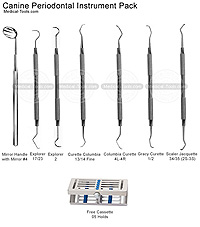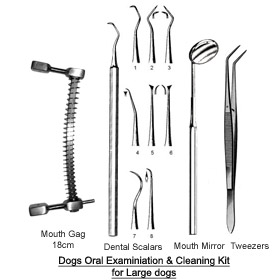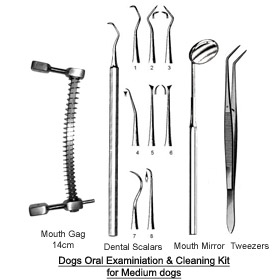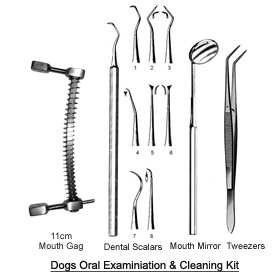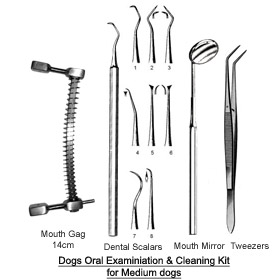Many pet owners believe that animals clean their own teeth naturally by chewing on bones, sticks, or other items in nature. While it may be true that animals in the wild chew to clean their teeth, they do not avoid oral diseases or the systemic infections that follow. In addition, animals in the wild are not eating processed foods that deposit plaque on the teeth—more likely they are eating entire rodents and other small prey, bones included. As chewing and tearing apart a kill can scrape teeth and massage gums, these animals suffer from broken teeth and a variety of problems in the mouth that contribute to illness and early death.
Domestic pets enjoy veterinary care that includes regular oral exams and teeth cleaning, preventive measures that allow for disease prevention and an extended life. Pets who do not receive dental care often suffer from gum disease as early as age 3. This leads to more serious health problems including heart, lung, and kidney disease. Preventing these problems is as simple. Periodontal disease is commonly found disease that is dealt with oral surgery.
Periodontal Disease
Periodontal disease is an infection of the tissue surrounding the teeth that takes hold in progressive stages. It starts out as a bacterial film called plaque. The bacteria attach to the teeth. When the bacteria die they can be calcified by calcium in saliva. This forms a hard, rough substance called tartar or calculus which allows more plaque to accumulate. Initially, plaque is soft and brushing or chewing hard food and toys can dislodge it. If left to spread, plaque can lead to gingivitis, an inflammation of the gums, causing them to become red and swollen and to bleed easily. As plaque and calculus develop below the gum line, professional cleaning will be needed to help manage it. If the plaque and tartar buildup continues unchecked, infection can form around the root of the tooth. In the final stages of periodontal disease, the tissues surrounding the tooth are destroyed, the bony socket holding the tooth in erodes and the tooth becomes loose. This is a very painful process for your four-legged friend, but these problems can be averted before they even start.
Signs of periodontal disease
All pets are at risk for developing dental problems. Once a pet displays any of the warning signs below, serious periodontal disease may be present. Loving Family Animal hospital encourages not only regular cleanings but preventative care at home to help prevent periodontal disease.
- Tooth loss
- Subdued behavior
- Abnormal drooling
- Dropping food out of the mouth
- Swallowing food whole
- Bad breath
- Yellow-brown crust on teeth
- Bleeding gums/Swollen Gums
- Goes to food bowl, doesn’t eat
- Change of chewing or eating habits
- Chewing on only one side
Treatment of oral disease
- Pet owners should look for the warning signs of oral disease. If any signs are present, the pet should be taken to the veterinarian for a dental exam.
- Pet owners can reduce the risk of oral disease. The first step in preventing oral disease is a routine physical examination, including dental exam.
- Pet owners should practice a regular dental care regimen at home. We offer several dental products to help with home care and are willing to help.
- Pet owners should schedule regular follow-up care with their veterinarians and ask about specially formulated foods with proven benefits in plaque and tartar removal.
Periodontal Instruments
Canine Periodontal Instrument Pack
Canine Mouth Gag Set
Dogs Tartar Scrapping – Mouth Cleaning Kit for Large Dogs
Tartar Scrapping Kit for Medium Dogs
Tartar Scrapping Kit for Small Dogs


